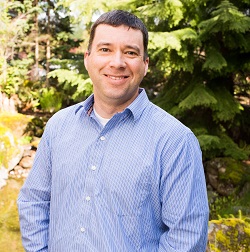Erik Hedberg

Erik Hedberg is an Associate Engineer with GeoDesign, Inc.
Specialties:
- Remedial systems engineering
- Hydrogeology
How did you choose environmental engineering as a career?
As I progressed in school, I was particularly drawn to the natural sciences in addition to core subjects like math, physics, and chemistry. It probably stemmed from my analytical personality coupled with a love of all things outdoors – particularly water! So, environmental engineering was a natural fit for me, because it’s a discipline that combines those subjects into something with a diverse array of real-world applications. It was also one of the only engineering curriculums that allowed me to incorporate coursework in groundwater hydrology, which I’ve always had interest in.
Within environmental engineering, what are your specific areas of expertise?
My specific areas of expertise include remedial systems engineering and hydrogeology. Early in my career, I was fortunate enough to work on a wide range of remediation projects, utilizing different techniques to address soil, groundwater, and vapor contamination. Through this experience, I was able to begin narrowing my focus to develop expertise in groundwater-related issues. Over time, my project involvement began to incorporate more “clean water” projects, including aquifer characterization, groundwater supply/production, water-rights, and construction dewatering.
Describe a time when you were able to come up with an innovative solution to a problem:
We performed aquifer characterization and testing activities in southern Oregon to help the Oregon Water Resources Department (OWRD) determine if proposed groundwater withdrawals would negatively impact nearby irrigators. Testing activities included extended pumping from several high-capacity wells and assessing short-term response (drawdown) at varying locations within the aquifer basin. The hydrogeologic setting was unique because groundwater levels in the fractured basalt system were extremely responsive to outside factors, including natural flow barriers within the aquifer matrix, barometric fluctuations, and even gravitational shifts through moon phases. These outside factors complicated the assessment of distant drawdown caused by pumping. To overcome this challenge, we incorporated a number of innovative techniques to filter out the effects of these outside elements to reveal the true effect of groundwater pumping. These techniques utilized an overlay of earth-tide data, area-specific barometric responses, and variable transmissivity information onto the pumping data. This analysis was instrumental in helping OWRD make informed decisions for the basin.
